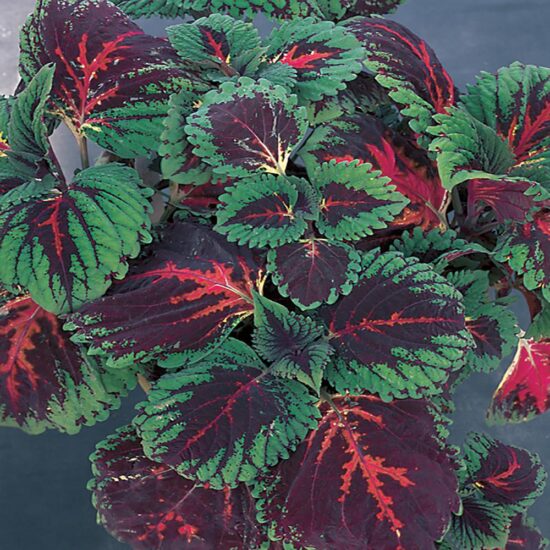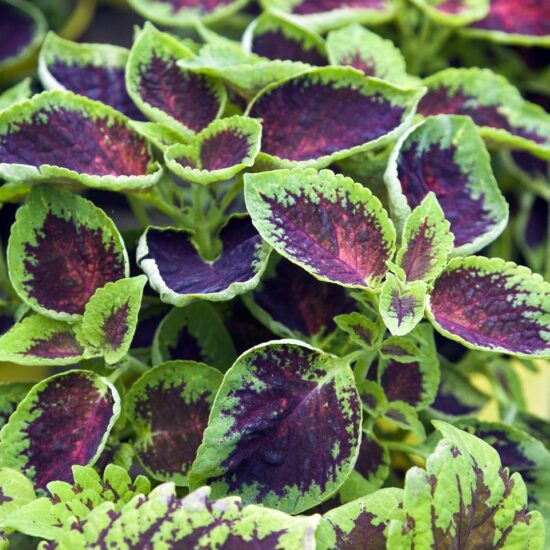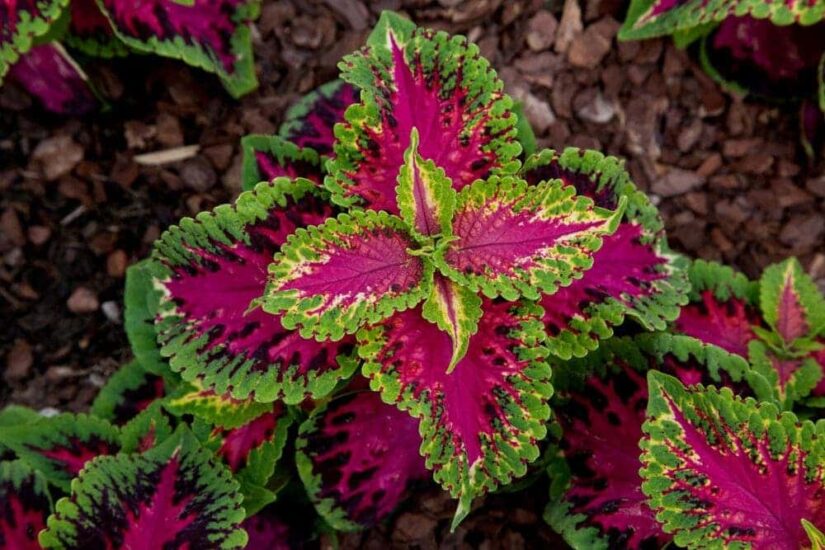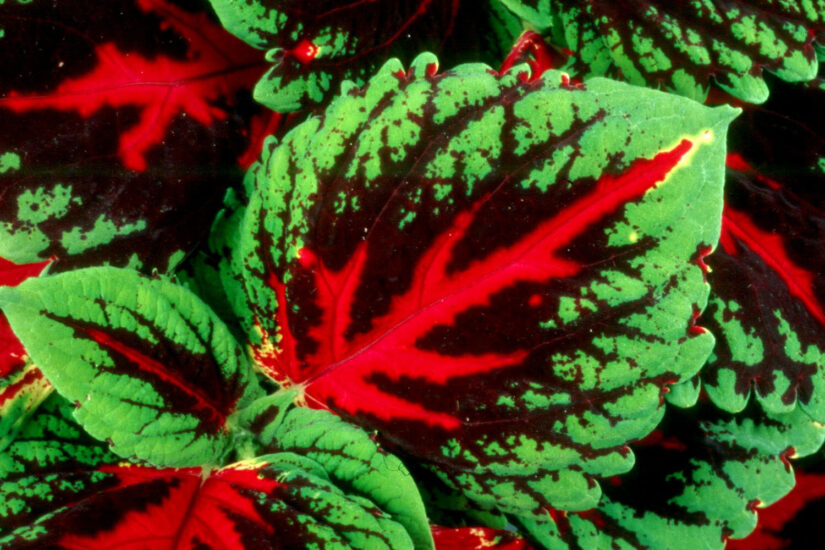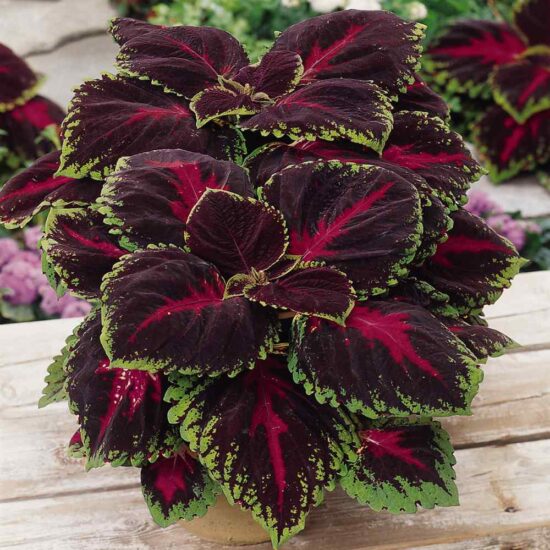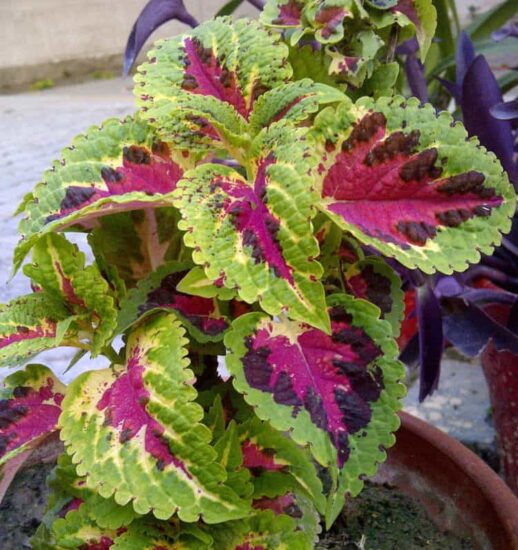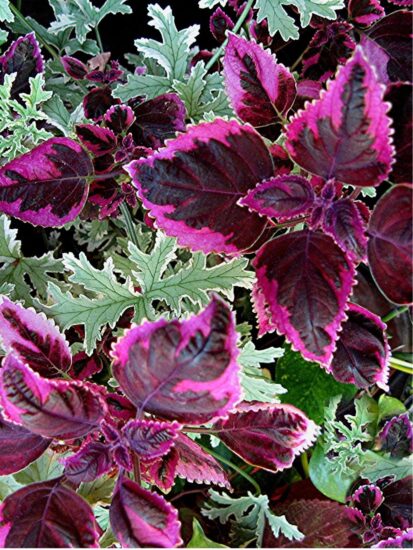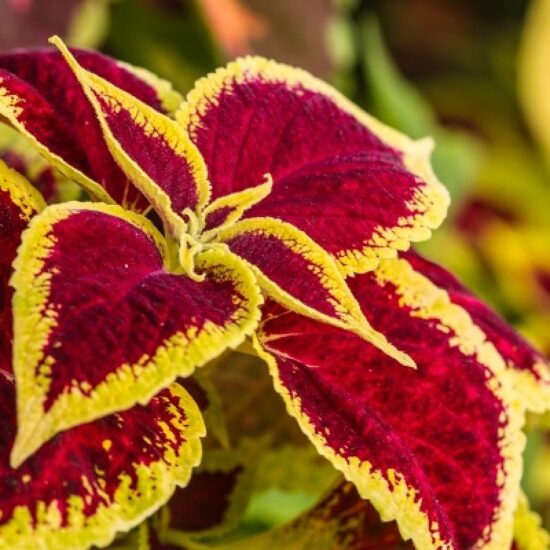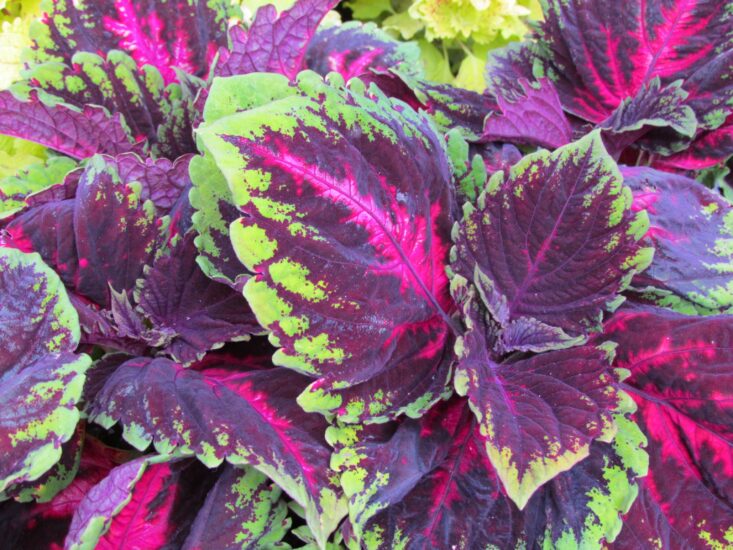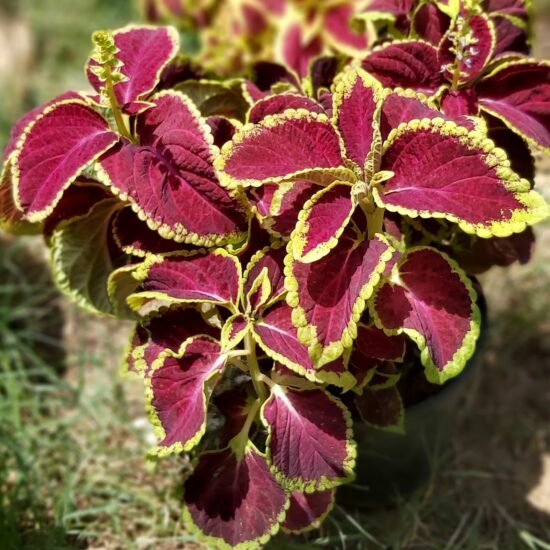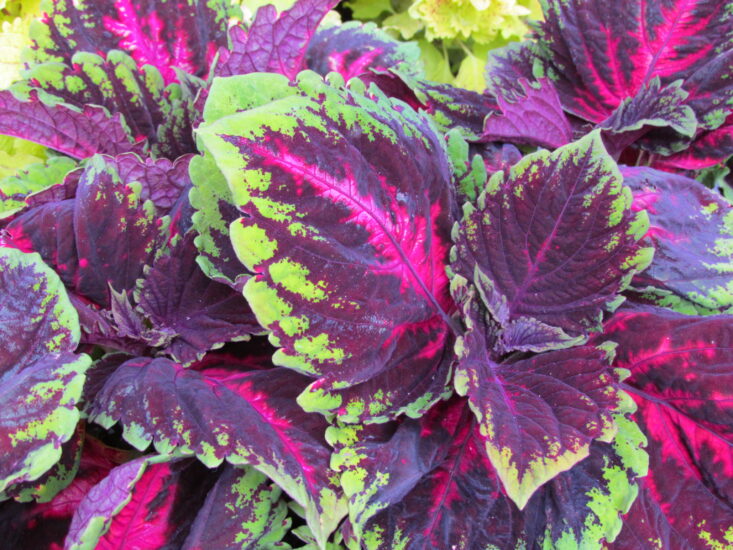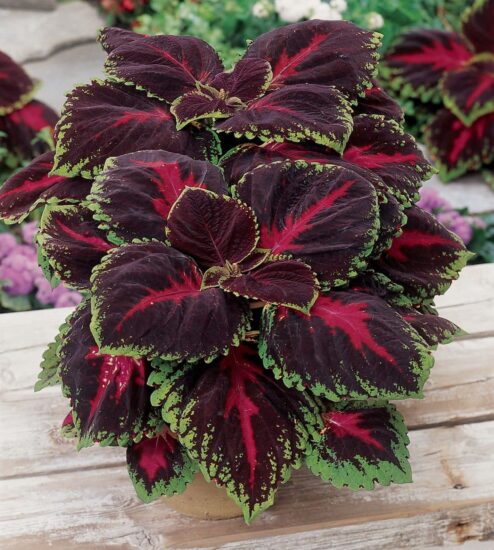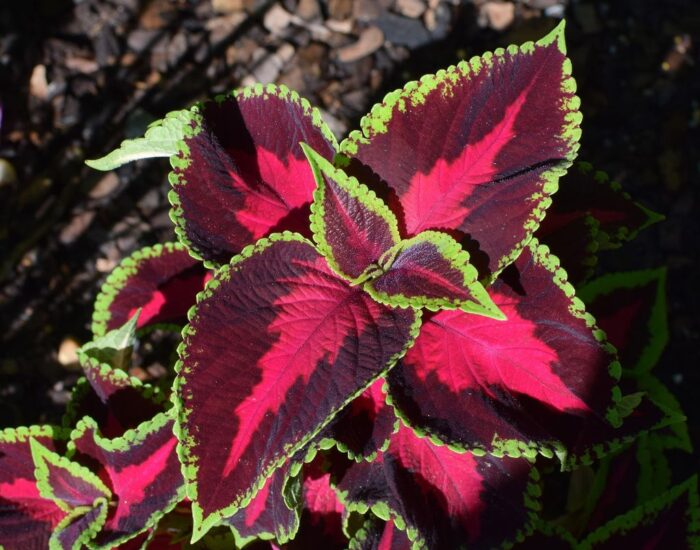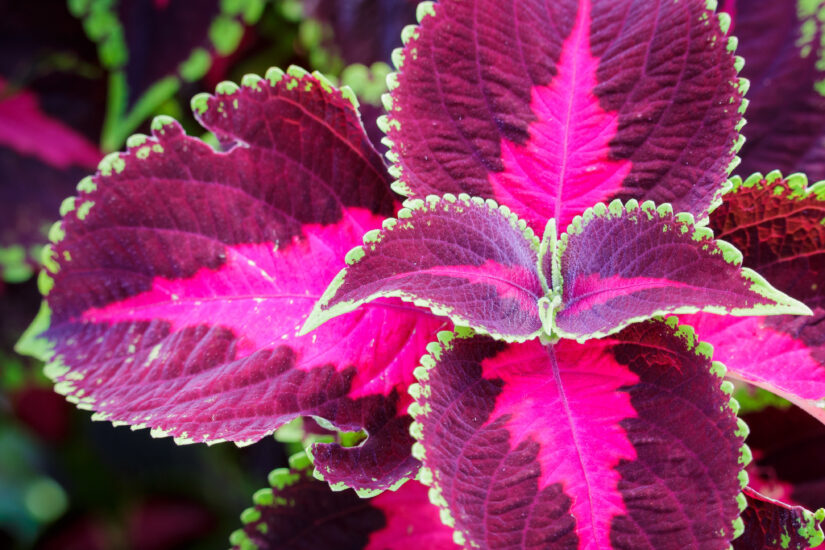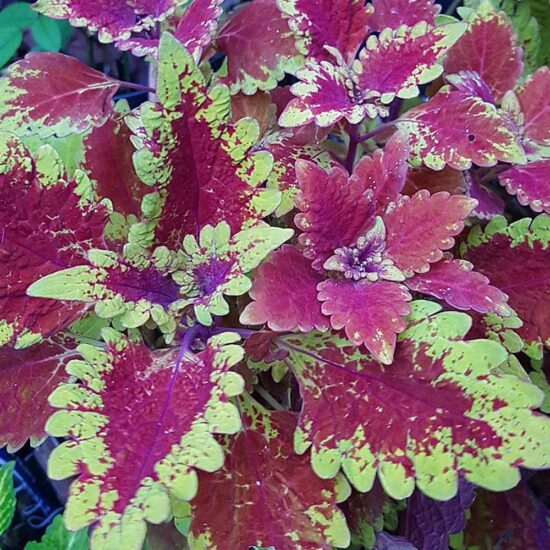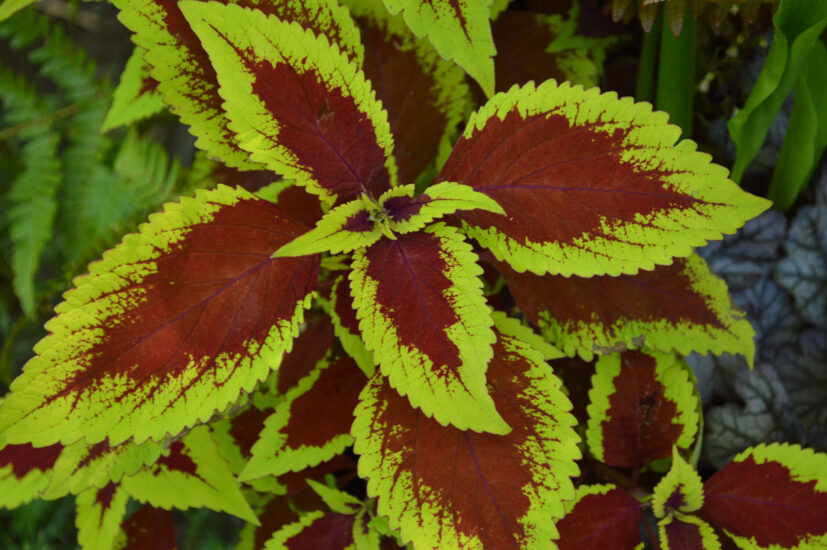The variety of patterns is amazing, with solid colors, splashes, spots, stripes, stains, borders and veins. Color intensity varies depending on sunlight, heat sensitivity and other conditions. The term “sun coleus” refers to selections that tolerate more sun. The varieties with dark leaves tend to tolerate more sun, while lighter varieties need more shade to minimize leaf scorch. Morning sun and dappled afternoon shade tend to maintain consistent leaf coloration. Too little light will encourage a weak-stemmed, less vigorous plant without the best color.
Another variable to consider is leaf texture, which includes large, small, twisted, elongated, arched, lobed, finger-like, and “duck-footed”—they resemble flippers.
Coleus can be grouped into three plant forms: upright, rounded and trailing. Frequent cutting, pinching and trimming can help to change the shape although the trailing varieties have great value at the edge of a planter or in a hanging basket.
Planting and careColeus has long been considered a shade plant but the best leaf color is achieved with morning sun and some degree of afternoon shade. Many varieties do well in both shade and partial sun. Some can take quite a lot of sun as long as they are not allowed to dry out. Avoid overly moist soil, which can cause leaf drop and encourage disease. Plant coleus after the risk of frost has passed when soil temperatures have warmed sufficiently and evening temperatures are above 60 degrees F. Feed the plants regularly with a water-soluble fertilizer, especially if growing in containers.
To maintain plant shape, pinch back every few weeks to prevent flowering. Pinch just above a set of leaves or branch junction for best appearance; don’t leave a stump. Some gardeners leave the small flowers, but it is best to pinch them off to direct more energy to stem and leaf growth. Coleus left to flower may lose vigor as the plant expends energy on seed production.
Get more plantsRaising coleus from seed is relatively easy. Plan to sow them indoors eight to 12 weeks before the last frost date in your area. Since seeds require light to germinate, sow them on the surface. Be sure to monitor water levels closely. For best results, use a seed starting system and read How to Start Seeds.
Overwintering coleus plants as houseplants is another way to get more plants. Temperatures near 70 degrees F. are required. Rotate the plants and pinch back as needed to maintain shape. Use grow lights to provide enough light.



